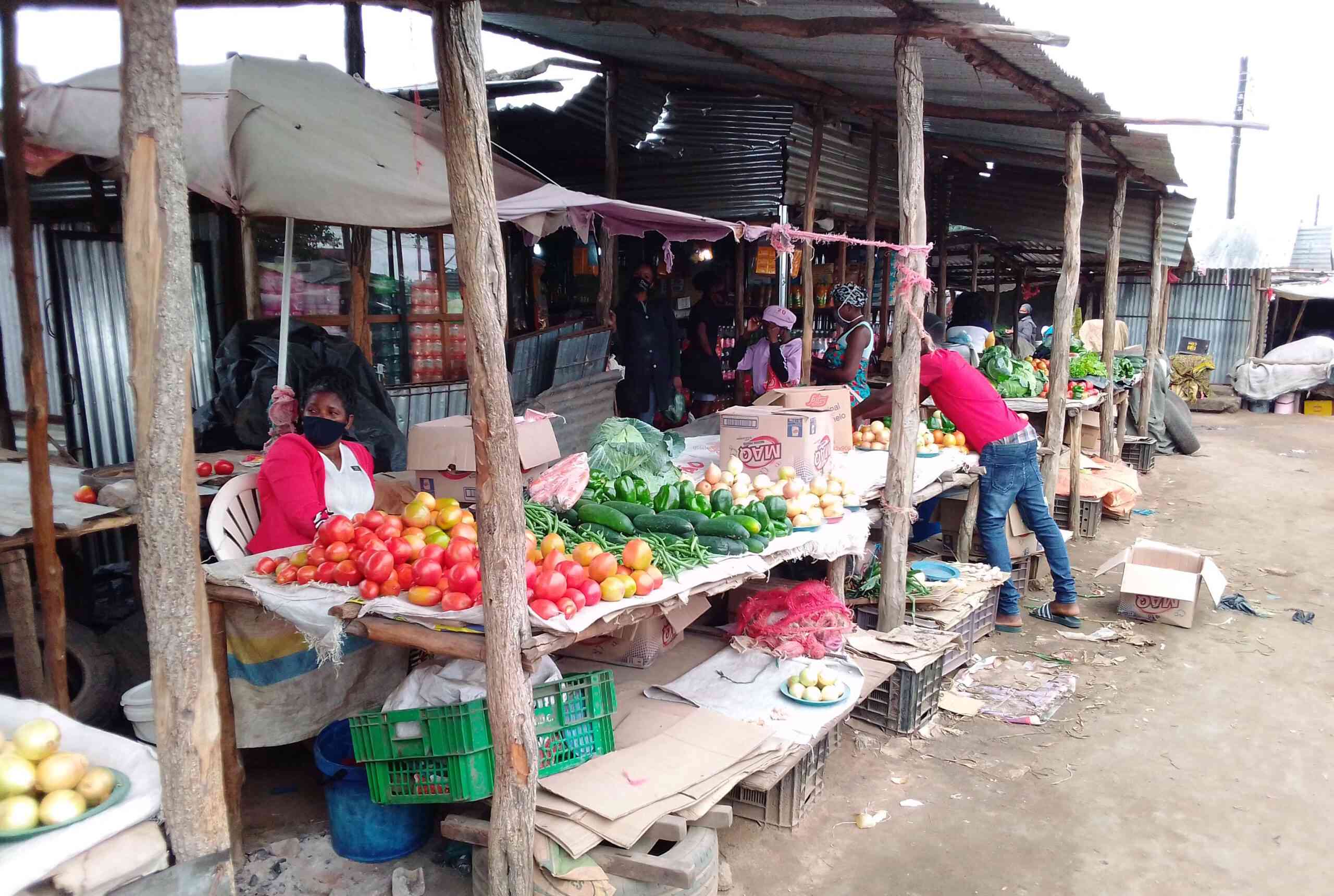
IMPROVING the competitiveness of the Zimbabwean economy has taken centre stage in the economic policy agenda of the country. In this vein, the financial services sector naturally plays a critical role, not only as trade facilitators and financial intermediaries in the economy, but the financial sector is in itself a high growth sector in the economy.
BY CLIVE MPHAMBELA
The quality and diversity of financial services has a strong bearing on the degree of export competitiveness. Today’s sophisticated international trade space requires banks that are not only able to seamlessly facilitate cross border transactions, but are also adequately resourced and geared to provide competitively priced financing for pre-shipment production, the speedy handling of trade finance documentation and the execution of appropriate exchange rate and financial risk management tools, which are all part of the package that banks should bring to the table. Exporters also require post shipment finance to liquidate pre-shipment commitments and keep their production lines going.
Why should we be talking about export-led growth in Zimbabwe?
Since the adoption of the multi-currency system in 2009, the major source of liquidity in the economy has been exports. Notwithstanding the fact that our export base has been limited to a few commodities; gold, tobacco and platinum, we have had to contend with a growing appetite for imports. The net result has been a widening of the trade deficit (negative net exports), leading to an unsustainably negative cumulative balance of payments position.
This has been made worse by sustained global economic fragility which has seen very slow and uneven global economic recovery patterns. Locally, Zimbabwean firms have faced an overvalued real effective exchange rate, occasioned by the strengthening of the US dollar against regional trading partner countries; the persistent fall in commodity prices driven by decline in demand from China, particularly for agricultural and mineral products; other structural challenges in the economy ie the use of obsolete equipment and infrastructural bottlenecks.
The main consequences of these factors have been the deterioration in the country’s BOT and overall BOP position, manifesting as:
- Chamisa under fire over US$120K donation
- Mavhunga puts DeMbare into Chibuku quarterfinals
- Pension funds bet on Cabora Bassa oilfields
- Councils defy govt fire tender directive
Keep Reading
Difficulties in effecting international payments due to reduced foreign currency balances — a long pipeline of import payments; cash shortages prevailing in the banking system reflecting constrained ability of the economy to import cash; crowding out of private sector investment by way of excessive government borrowing due to constrained fiscal space and subdued revenue, which factors may combine to pose threats to Financial Stability in the medium term.
In that context, what is a bankers understanding of competitiveness?
International trade between countries has since moved from being based entirely on one country’s “comparative” advantage but increasingly focus has shifted to a country’s “competitive” advantage. The key differences between comparative advantage and competitive advantage being that:
Comparative advantage, in economics refers to the ability of an entity (an individual, a firm, or a country) to produce a particular good or service at a lower “opportunity cost” than another party. It is the ability to produce a product most efficiently, given all the other products that could be produced.
It is referred to as absolute advantage if a party is able to produce a particular good at a lower absolute cost than another party. The root of comparative advantage is usually due to factor endowments, that is, it depends on how well endowed with various factors of production such as land, labour, and capital.
We all know that comparative advantage explains how trade can create value (gains of trade) for two or more countries even when one can produce all goods with fewer resources than the other with each specializing in those goods where it has comparative advantage, and trading those good for other countries goods.
However, trade in the real world today works on the basis of competitive advantage.
A “competitive advantage’’ is obtained over competitors gained by the party offering consumers “greater value”, either by means of “lower prices” or by providing “greater benefits” and “superior service” that “justifies higher prices”.
When a firm sustains profits that exceed the average for its industry, the firm is said to possess a competitive advantage over its rivals. The goal of much of trade and business strategy today is to achieve a sustainable competitive advantage over other firms and for countries, each seeks to become more competitive than another.
Therefore, merely possessing a comparative advantage no longer guarantees success for a country on the global trade scene. The world is now driven by competitiveness. For Zimbabwe to enjoy export led growth, we must, therefore, start thinking in terms of defining our “competitive advantages”.
The challenge, therefore, is for all of us to understand that competitiveness is really about two key issues: Productivity and Innovation. Productivity is the element that drives cost competitiveness or cost advantage, as it determines how efficiently resources are being combined to produce a unit of output or service.
On the other hand innovation drives what the competitiveness guru, Michael Porter terms “differentiation advantage”, which speaks to the ability of a product or service to deliver benefits that exceed those of competing products in both export and domestic markets. Thus, competitiveness is an optimal blend of productivity and innovation that will enable a country to generated superior value from its exports (of goods and services, including tourism products!) and, therefore, superior revenues for itself.
Why is this kind of thinking critical in the current competitiveness discussion that we are having in Zimbabwe? This thinking is important to us as banks because we firmly believe that driving up the country’s competitiveness cannot be achieved by simply cutting labour costs across the board whether through internal devaluation or other means.
We ardently believe that as a country, we must also concurrently place greater emphasis on driving up labour productivity as well as incentivising Innovation into new products and processes and services in order to lower (unit) costs and improve quality on a sustainable basis. Low cost but low quality products and services will sell very cheap, will not earn us a lot of money and will not make this country a globally competitive player at all.
We do not have the population size to follow the example of China, where comparative labour costs, due to a huge population, were leveraged to make China globally competitive as a global manufacturing centre. If we try that route, we will just become a very small poor country, with a very poor, lowly remunerated and de motivated workforce. Neither do we have the population size and income levels to drive domestic consumption to levels where our corporations can become globally competitive. We thus need to look at export markets for both goods and services.
The most competitive and most valuable global companies do not sell cheap products, for example, Apple Incorporated, Microsoft etc, but deliver superior products based on Innovation and very high levels of productivity. The most competitive economies in the world are high income economies, churning out superior value added products, they did not become competitive by going for cheap.
We, therefore, need to start thinking in terms of areas where we can achieve very high productivity and very high quality in exchange for very high value.
Our tourism sector for example, which for all intents and purposes is an “export sector”, is very low hanging fruit, where these concepts can be quickly rolled out.
The labour productivity analysis brought forth by the first Zimbabwe National Competitiveness Assessment Report in 2015, highlighted that comparatively, the Financial Services Sector in Zimbabwe is the most highly productive, generating per capita income of over $80 000 per employee. However, productivity in agriculture was reportedly very low, registering annual income of just over $200 per employee.
In terms of regional averages, Zimbabwe at approximately $2 000 annual output per employee, ranked only ahead of Rwanda, but lagged behind Kenya and Zambia, and significantly behind South Africa and Mauritius. Zimbabwe’s output per unit of labour is very low compared to its comparator countries, implying that the average productivity in the country is very low. This means that as a country, we are not competitive.
As we seek to drive export led growth, we therefore need to invest more in new technology, machinery and renovate our production processes in order to improve the country’s competitiveness.
We need to introspect, and leverage those areas where we can offer a unique value proposition to our export markets. For example, what is unique about tobacco produced in Zimbabwe? Is it just a commodity, or there is something extraordinary that can get us a globally competitive position as a tobacco producer. Zimbabwean cheese used to rank second only to cheese produced in France. The French successfully branded “champagne”, a white sparkling wine made from grapes grown in Champagne province, France. Cuba has its world famous Cuban cigars. Ireland built its competitiveness on unique beers and other alcoholic beverages whiskeys and so on. The Swiss are renowned for making the best chocolate in the world.
In that context, what goods within our export basket, can we uniquely brand as a nation, in order to take on the extremely competitive global market place? We used to pride ourselves as a producer of “hand picked cotton”. What aspects of our unique natural heritage, mineral and agricultural endowments, superior education and technical skills can we translate into globally competitive, high value products and services through an appropriate level and mix of productivity and innovation?
Clive Mphambela is a Banker. He writes in his capacity as the advocacy officer for the Bankers Association of Zimbabwe. BAZ expressly invites all stakeholders to give their valuable comments and feedback related to this article to him on [email protected] or on numbers 04-744686, 0772206913












